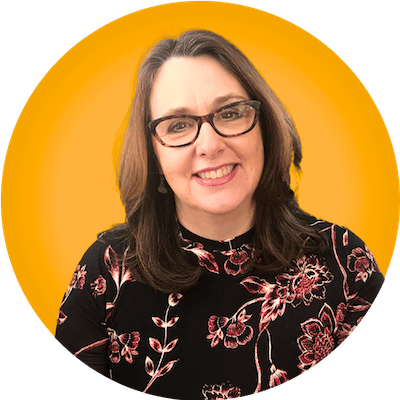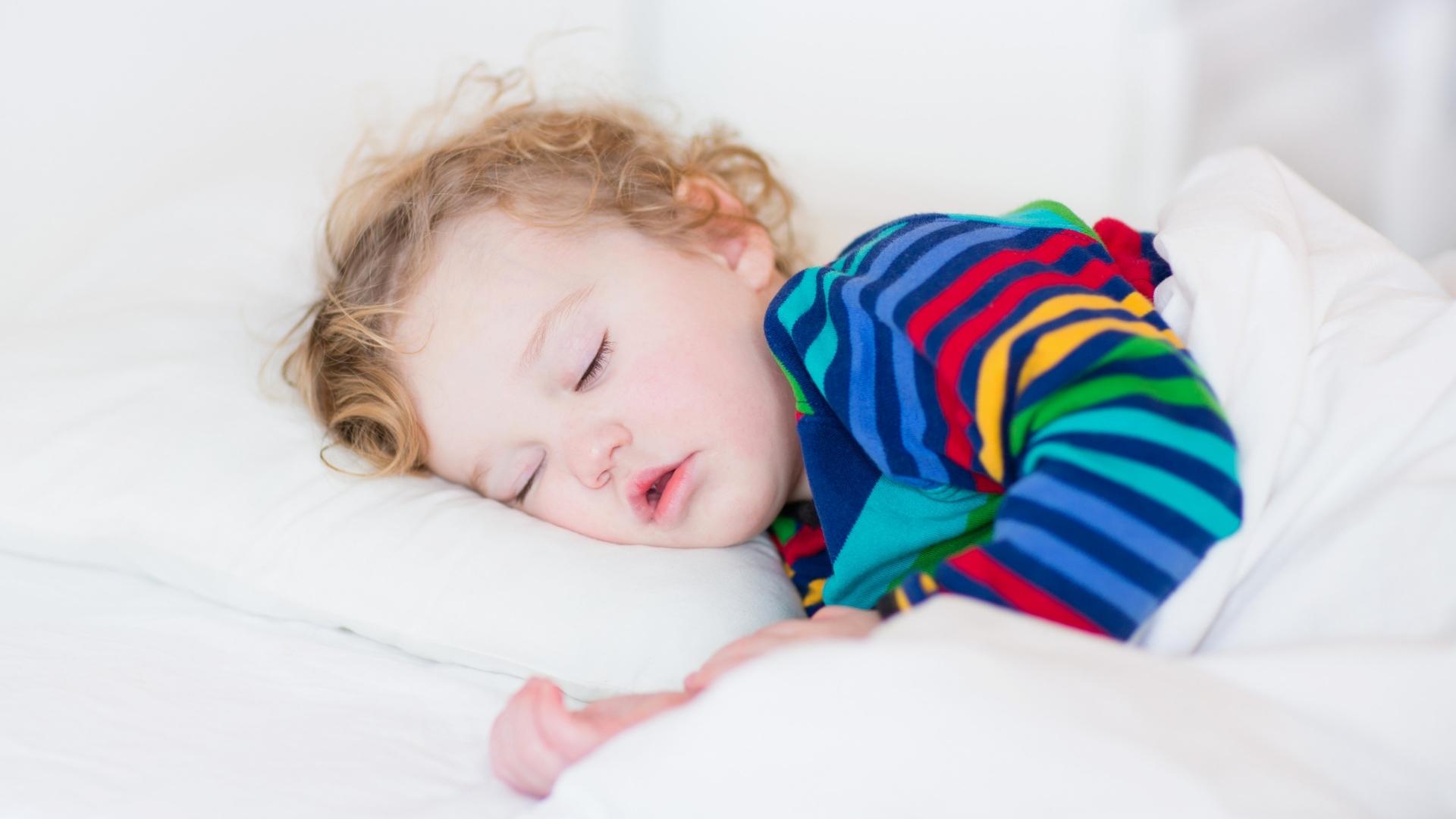When you are trying to establish healthy sleep habits and a balanced sleep routine, the most common thing that will upset your best intentions and hard work is encountering a sleep regression.
So let’s break down why sleep regressions happen; when they commonly occur and give you actionable advice to help you get through this tricky time without undoing all of your hard work.
What Is A Sleep Regression?
A sleep regression is a short period of time in which your child’s healthy sleep habits and sleep pattern become disrupted by them fighting sleep, waking more often and struggling to fall back asleep.
Signs Of Sleep Regression
Common signs that your child is going through a sleep regression include:
- Fighting naps and bedtime when they never used to
- Having difficulty falling asleep at bedtime
- Missing or having shorter naps (despite being very tired)
- Sleep cycles are not consistent from day to day
- Waking frequently at night despite no apparent cause
- Experience more light sleep than deep sleep and are getting restless
- Struggling to settle back to sleep once awake and needing your presence to go back to sleep
- Fussing and crying more than usual
Sleep Regression Ages
A sleep regression can occur at any point during your child’s early years but it will usually coincide with your baby reaching big developmental milestones. Therefore, the common sleep regression ages are:
4-Month Sleep Regression
What is commonly known as the 4-month sleep regression is probably the most difficult to deal with as this is when you will have been working so hard to get establish a healthy sleep-wake cycle and just as your baby is finally waking less at night… You suddenly appear to be back to square one!
But baby sleep regressions can be resolved just as well as toddler ones, so don’t worry.
6-Month Sleep Regression
A rare sleep regression, but definitely one that can happen… The 6 month sleep regression can be a nightmare for new parents as your baby goes through a growth spurt, so make sure you’re prepared with a solid sleep schedule and bedtime routine.
8 to 10 Month Sleep Regression
The 8-month sleep regression occurs when your baby is going through significant physical and brain developments such as learning to crawl, cruise, and walk as well as taking a leap in language development.
12-Month Sleep Regression
Between 9 to 13 months of age, babies will start standing up and by the 1-year mark, some may even take their first tentative independent steps.
Reaching big milestones can cause temporary sleep problems which in this case can trigger a 12 month sleep regression.
18-Month Sleep Regression
Toddler sleep regressions occur around the 18 month mark and are most commonly attributed to your child’s newfound independence.
It can also be related to teething as the breaking through of your little one’s molars (which can be very painful and uncomfortable) can result in a child who struggles to settle and relax.

How Long Do Sleep Regressions Last?
Sleep regressions usually last from 2 to 6 weeks. But depending on the cause of the regression, your child may only have a few sleepless nights.
REMEMBER: No matter how desperate you may feel during a sleep regression, remember that it is just a phase and that if your baby or child has been sleeping well and had healthy sleep patterns before, they can again!
What Causes A Sleep Regression?
A sleep regression can be caused by:
- Natural growth spurts in your baby’s physical, mental and emotional development such as learning to crawl, walk or teething
- Your child needs less daytime sleep as they go through a nap transition.
- They are experiencing separation anxiety and/or toddler independence
- Their circadian rhythm is out of alignment with nighttime sleep, naps and awake times
- Moving from a crib to a big bed
- Potty training
- The arrival of a new sibling
How To Survive A Sleep Regression
Here are the best tips and tricks to help you get through a sleep regression phase without undoing all the hard work you put in beforehand to create a healthy sleep schedule!
1. Teach Your Child To Self-Settle
If you have not already introduced self-settling then letting your baby spend time alone in their cot whilst awake during the day will help them not to panic if they find themselves awake when you are not around.
Try and introduce self-settling, by putting your baby down for a nap in the daytime when they are not fully asleep, as this will teach them that they do not always need you in order to fall asleep.
Here’s a quick video about self-settling to get you started:
NOTE: Self-settling is not a sleep training method.
2. Have A Consistent Bedtime Routine
A simple bedtime routine will consist of:
- Having a bath,
- Followed by a massage,
- Cosying up together with a suitable baby book and singing a lullaby,
- Having a feed or offering a drink,
- And finally, settling down to sleep in their crib or bed.
The entire bedtime routine should start between 6pm and 7pm, always follow the same sequence of events and take no longer than 45 minutes.
Looking to get your little one to sleep quickly and effortlessly? Check out my Bedtime and Nap Cheat Sheet and master the art of making daytime naps and bedtimes as seamless as possible.
A bedtime & nap cheat sheet so good your little one will ask you to put them to bed...
Laura Williams "This is a life saver! I'm so glad I downloaded your bedtime & nap cheat sheet. My little one actually asked me to put him to bed last night! Unbelievable! Thank you so much!"
Click Here For The FREE Cheat Sheet
3. Try And Avoid Your Child Becoming Overtired
An overtired baby can become extremely distraught and difficult to settle because their body has produced cortisol (stress hormone) and adrenaline (fight or flight hormone) to deal with the lack of sleep.
Sadly, as a result, these hormones have the opposite effect of keeping your baby awake when you are trying to get them to sleep.
So, watch for sleep cues and adjust their nap schedule and wake windows to ensure your child gets enough daytime sleep and avoids overtiredness.
Age-Appropriate Sleep Requirements
These are the recommended hours of sleep in a 24-hour period that your child should be getting at their age:

- 1 Month – 15 to 18 hours
- 2 Months – 15 to 17 hours
- 3 Months – 15 to 16 hours
- 4 Months – 12 to 15 hours
- 5 Months – 12 to 15 hours
- 6 Months – Around 15 hours
- 7 Months – Around 14 hours
- 8 Months – 14 to 16 hours
- 9 Months – 14 to 15 hours
- 10 Months – 12 to 16 hours
- 11 Months – 11 to 14 hours
- 12 Months – 13 to 15 hours
- 13 Months – 12 to 14 hours
- 14 Months – 12 to 14 hours
- 15 Months – 13 to 14 hours
- 16 Months – 12 to 14 hours
- 17 Months – 13 to 14 hours
- 18 Months – 13 to 14 hours
- 19 Months – 11 to 14 hours
- 20 Months – Around 13 hours
- 21 Months – Around 13 hours
- 22 Months – 12 to 13 hours
- 23 Months – 12 to 13 hours
- 2 to 3 Years – 11 to 14 hours
- 3 to 5 Years – 10 to 13 hours
4. Keep Nighttime Interactions Low Key
If you do go to your baby at night, keep things low-key with little to no talking and make the resettling as quick as possible.
Try not to pick up your child but rather pat their tummy or forehead and gently sing a lullaby, to let them know that you’re by their side.
REMEMBER: If you do have to pick up your child (for example, if they’re scared from a night terror)… try to put them back down before they are fast asleep to reinforce their self-settling skills.
5. Ensure Your Child’s Room Is Cosy
You wouldn’t want to sleep in a cold, bright room and neither does your little one.
Create strong sleep associations by utilising blackout blinds, white noise machines, night lights and seasonally age-appropriate sleepwear…
And keep your child’s sleep environment between 68°F and 72°F (20°C to 22.2°C) to ensure your little one is as comfy and cosy as possible.
Also, ensure that your child has a full tummy before bed so that you limit the possibility of night wakings due to being hungry.
Maintaining a good sleep routine with your baby can be tricky, especially through changing seasons or when you’re away from home! This beautiful blackout blind from Tommee Tippee is made from lightweight premium fabric and completely blocks out daylight, helping to create a dark and sleepy space for baby, no matter where you are!
Finding the right night light for your child can be quite a task. You want something safe, comforting, and practical. The Cozy Starry Night Light ticks these boxes, with eye-friendly warm lighting and an easy-to-use dimmer.
Its gentle glow makes it the best night light for feeding baby, diaper changes, or comforting your little one back to sleep.
As your baby grows the Cozy Starry Night Light's starry sky projection can provide comfort and gentle quiet time stimulation. Its soft lighting ensures a dreamy, peaceful environment, supporting your baby’s natural sleep cycle.
It really is a fantastic nightlight (at a very reasonable price!)
- Eye-friendly warm lighting with adjustable brightness.
- Includes a timer function for convenience.
- Projects a starry sky that is soothing for little ones.
- Rechargeable battery, so it's very portable.
- A USB adapter is not included for charging.
- The star projector is static without motion (however, this is ideal for very young babies and toddlers).
- Battery life varies based on the brightness settings.
6. Be Consistent
Being consistent is very important throughout your child’s life.
They will need healthy boundaries everywhere and when it comes to sleep… there is no exception!
Already established routines that you have worked so hard to build and maintain must remain, so you will need to be patient, loving and kind but firm.
7. Offer Acceptable Choices
By providing opportunities for your toddler to feel a sense of independence during the day and at bedtime, you allow them the space to be independent within a controlled situation.
It will also help them accept that your non-negotiation over bedtime as a boundary cannot be shaken.
For example, you can offer your child a choice of two different pyjamas to wear or a choice of 2 bedtime books.
REMEMBER: Do not offer too many choices. Your child can really only manage to choose between 2 items.
8. Have Quiet Times During The Day
Insisting on a quiet time after lunch (even if your child does not want to nap) is a great idea to encourage your little one to slow down and avoid overtiredness.
I personally recommend creating a calm-down corner to accommodate quiet time as this is a dedicated distraction-free and safe space where your child can relax. Using a teepee or bean bag will help to make this corner extra comfortable.
All children love a little house and a teepee is a versatile set up that you can use both indoors and out. This is an item tha will grow with your child's imagination and provide hours of fun for you and them. The perfect setting for nursery tea parties and a cosy snuggle spot for hanging out and reading together or alone.
You should also limit over-stimulating games at the end of the day as this will keep their minds and body active at a time when you want them to slow down.
REMEMBER: Limit screens before bed too. Ideally, your child should not be looking at a screen at least 1 hour BEFORE the bedtime routine to ensure restful sleep at night.
Sleep Schedules To Help Avoid Sleep Regressions
Having consistent sleep schedules and bedtime routine charts can be very useful tools to help you know when your little one needs sleep and how to prepare them for sleep.
Here are our sleep schedules to get you started:
- Newborn Sleep Schedule
- 1 Month Old Sleep Schedule
- 2 Month Old Sleep Schedule
- 3 Month Old Sleep Schedule
- 4 Month Old Sleep Schedule
- 5 Month Old Sleep Schedule
- 6 Month Old Sleep Schedule
- 7 Month Old Sleep Schedule
- 8 Month Old Sleep Schedule
- 9 Month Old Sleep Schedule
- 10 Month Old Sleep Schedule
- 11 Month Old Sleep Schedule
- 12 Month Old Sleep Schedule
- 13 Month Old Sleep Schedule
- 14 Month Old Sleep Schedule
- 15 Month Old Sleep Schedule
- 16 Month Old Sleep Schedule
- 17 Month Old Sleep Schedule
- 18 Month Old Sleep Schedule
- 19 Month Old Sleep Schedule
- 20 Month Old Sleep Schedule
- 21 Month Old Sleep Schedule
- 22 Month Old Sleep Schedule
- 23 Month Old Sleep Schedule
- 2 Year Old Sleep Schedule
- 3 Year Old Sleep Schedule
Looking Ahead From A Sleep Regression
No matter the circumstances under which a sleep regression has occurred, it is important to remember that this is just a phase and not a permanent sleep disruption.
Things will get better!
Follow the advice laid out above and trust your instincts.
Do what is right for you and your child and if you feel the need to rock them to sleep… Then do so.
For now, getting everybody to have enough sleep is your main aim.
NOTE: The content on this post is for informational purposes only and should not replace medical advice from your sleep consultant, doctor, pediatrician, or medical professional.
Need More Parenting Help?
- Download our FREE Bedtime & Nap Sleep Cheat Sheet. It’s a free, easy-to-use and proven formula designed for parents of 0-5 year olds to master the art of consistently undisturbed and restful sleep without the yelling, nagging or exhausting long-winded evenings.
- Check out our Parenting Toolbox. You’ll get access to expertly-chosen products that you can guarantee are the best for your little one and your wallet.
- Are you looking for personalized guidance to navigate the challenges of parenting? I offer 1-on-1 consultations to bring you tailored strategies and actionable advice to help support your child's growth and well-being with confidence.

A bedtime & nap cheat sheet so good your little one will ask you to put them to bed...
Laura Williams "This is a life saver! I'm so glad I downloaded your bedtime & nap cheat sheet. My little one actually asked me to put him to bed last night! Unbelievable! Thank you so much!"
Click Here For The FREE Cheat Sheet




